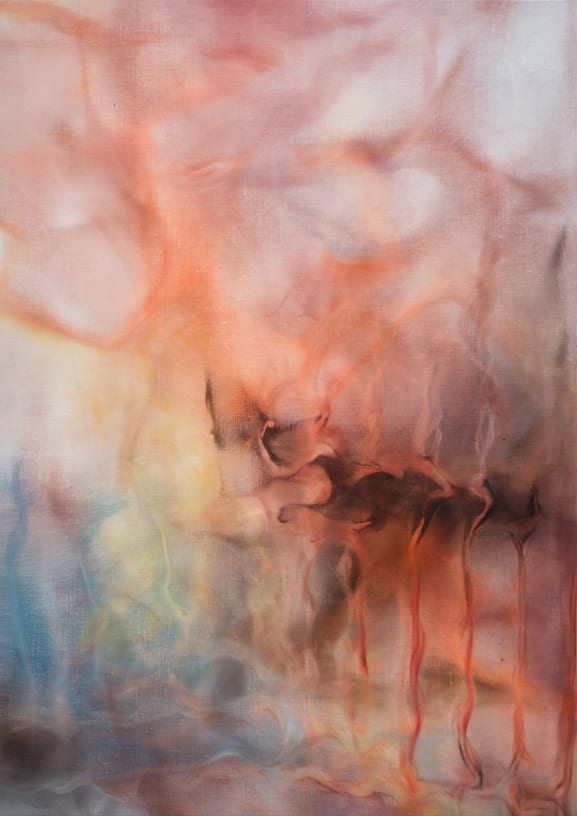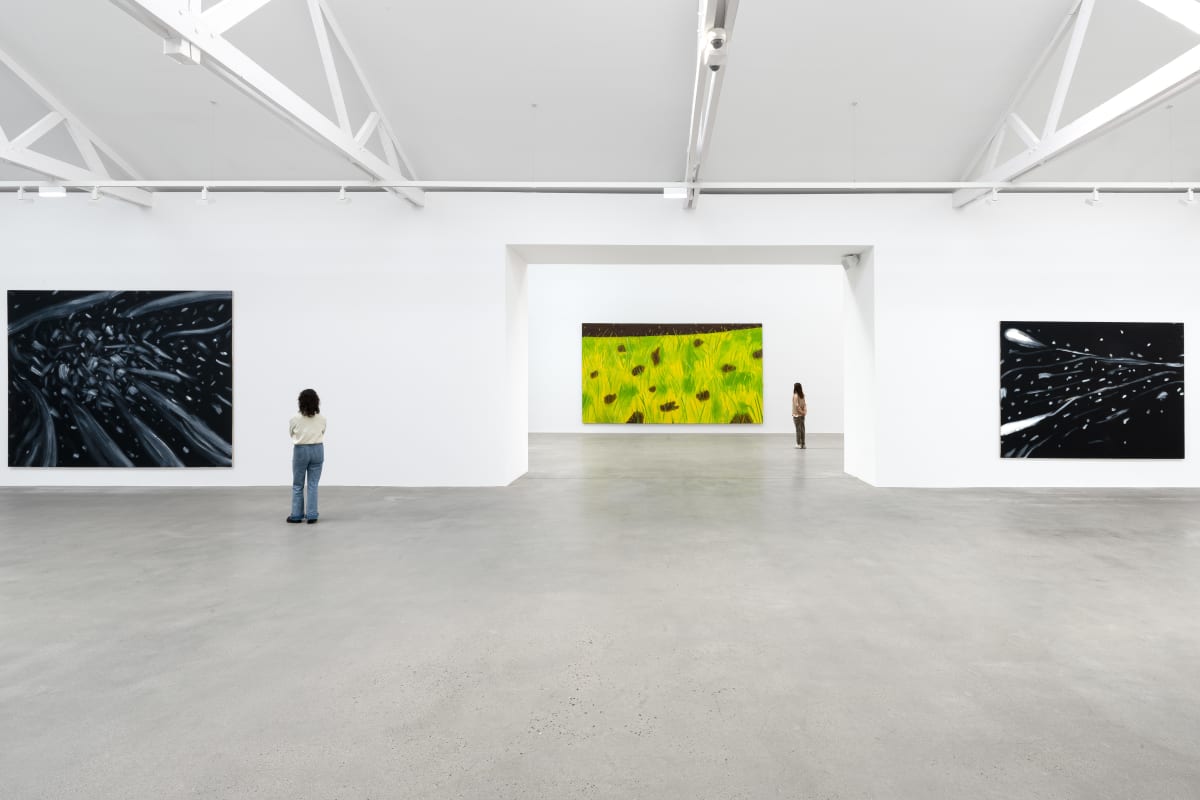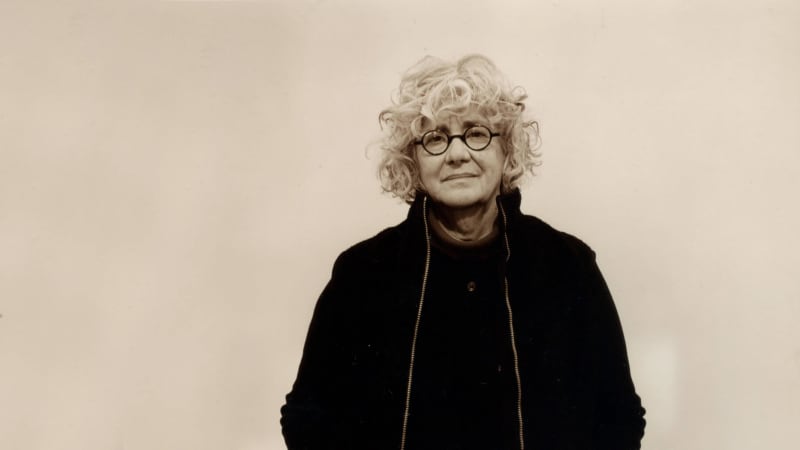Alex Katz Would Rather Own a 1930s Balenciaga Coat Than a Richard Serra Interview with the artist . (This link opens in a new tab).
BY STEPHANIE SPORN
Throughout Alex Katz’s seven-decade career, fashion has been a preoccupation. “It’s like you say, ‘yes, yes, no’ to everything that comes in front of you,” the 96-year-old artist tells Vogue. “I’m painting the now, and fashion is now.” Katz’s scrutinous eye comes through vividly in his paintings, sculpture, and prints, which seem to effortlessly capture the essence of the sitter’s style as much as the person themself.
One year after his major Guggenheim retrospective, the New York–based artist is showcasing three bodies of never-before-seen work made between 2021 and 2022 in Alex Katz: Claire, Grass and Water. On view April 17 through September 29 at Fondazione Giorgio Cini in Venice, the show was curated by the organization’s director, Luca Massimo Barbero, with support from Thaddaeus Ropac gallery. Coinciding with the 60th Venice Biennale, the exhibition ranges from abstracted landscapes—both jubilant and ominous—to pure fashion.
Thirteen of the 26 works pay homage to mid-century American designer Claire McCardell, who as a pioneer of American sportswear and championed the same timelessness, elegance, and unfussiness in her garments that Katz has cultivated in his distinctive approach to representational painting. Below, the artist discusses how the series came to be and revisits key fashion moments from his career—including one that has yet to happen.
How did you become interested in fashion?
My parents were interested in fashion. They were from Russia and were very concerned with how they appeared. My father was a very sharp dresser. He’d go to work in a shirt, tie, and pants—all pressed—and a beat-up suede jacket. I didn’t realize how chic that was until I was 35. But I always knew his ties were glorious. I also went to a low-grade high school in Queens, but it was high-grade as far as fashion and dancing.
How have you consumed fashion—did you grow up flipping through magazines, for example?
Fashion is in the air. Every so often you see something in the paper, and it looks good, but not too often. It’s about how people wear their clothes. When someone dresses up and feels good, they emanate that.
You once said, “People think fine art is above fashion, and I think that’s ridiculous!” Can you tell me why you think that hierarchy is arbitrary?
I think fashion and art relate a lot. Artists sometimes find fashion is commercial, but actually, they both are. And sometimes they both aren’t, too. I like fashion and how it makes something new and fresh. As far as the art goes, I would rather have a 1930s Balenciaga coat in my living room than a Richard Serra. [Cristóbal] Balenciaga was a great artist in the 1930s into the 1940s. Very few sculptures from that period come close to his beautiful forms.
That’s a hot take! Are there any other designers you deeply admire?
I’d put Charles James in that category. I also visited the Dior show at the Brooklyn Museum, and I didn’t realize how good [Christian Dior’s] clothes were. They really were perfect.
When it comes to their clothing, how much direction do you give your sitters? Do you ever alter their clothing or add details after the fact?
None. They come as they are, and you want them that way. I never alter the clothes.
What made Claire McCardell suddenly pop into your mind in 2022 when you completed these paintings?
The art world was so traditional and dreary. I thought it could use a little bit of up. I always thought McCardell was very special, even a little heroic. She made clothes for everybody, and she had a hand on American taste. Her clothes were a little blunt—they weren’t really refined, either in cut or conception. But they were so new and different from European fashion.
I love these paintings’ graphic quality, as well as the cropping. The style really reminds me of when magazines predominantly featured fashion illustrations over photographs.
You want to make a painting that looks new. Fashion advertising was a big source of inspiration for me because the designer wanted to make something new. Some of it was very superficial, but it functioned very well in fine art for me.
Are there any other designers that you would love to revisit in paint the way you did with McCardell?
I admire Adrian’s designs for theater. I saw an exhibition on him in Paris; I was asked whether I would want to go to a museum or go to an Adrian show, and I said, ‘No contest.’ I don’t know who designed for Ginger Rogers, but whatever she wore was always impeccable.
Let’s revisit some fashion moments from your past work. How did the little black dress become an icon of your oeuvre?
The black dress was a thing during the ’50s that girls wore to parties. My wife Ada’s mother was taken out of school at six to learn sewing, and she was very advanced in fashion. She made all of Ada’s clothes until she married me—so ages 5 to 29—and imparted great taste to her. If you look at The Black Dress (1960), Ada is wearing an elegant dress her mom made her. The dress is perfect. It has a laidback quality, like a Dior. In that dress, Ada will be the most attractive woman in the room.
How did you come to work with Norma Kamali for the paintings, Pas de Deux (1983) and Eleuthera (1984)?
A magazine had asked several artists to work with different designers. They first gave me a designer whose work I didn’t really like, so then they gave me Norma Kamali. I got this yellow raincoat of hers, and I really liked working with high fashion. When I did Pas de Deux, I called Norma up and asked for more clothes. I had the couples pick out the pieces they wanted to wear, and the interesting thing was how differently each of the five guys wore a suit.
In 2015 you also collaborated with Barneys and took over their windows—what was that experience like?
[Roy] Lichtenstein did a Barneys window with a big frisbee in it, and I said, ‘Well, I gotta make something better than that.’ I thought it was sensational. My idea was, ‘Let’s take this very expensive display space and negate it with a big frieze on top.’ We used a scrim and lit it from the back. It was fabulous. You could see it from four blocks away.
You’ve designed costumes for choreographer Paul Taylor for 30 years. Have you ever thought about designing commercial fashion?
Actually right before the pandemic I was asked to collaborate with this designer whose style was right on the money—it was contemporary but retro. I designed a whole line, and then the pandemic came, and they went out of business. I had a lot of fun designing. I wanted to do a man’s coat with a long lapel that went eight inches below the belt. I wanted one for myself, of course. I also wanted to make one in white, which would be the loudest and flashiest.
Alex Katz Claire, Grass and Water is open April 17 through September 29, 2024 at the Fondazione Giorgio Cini.










































































































































































